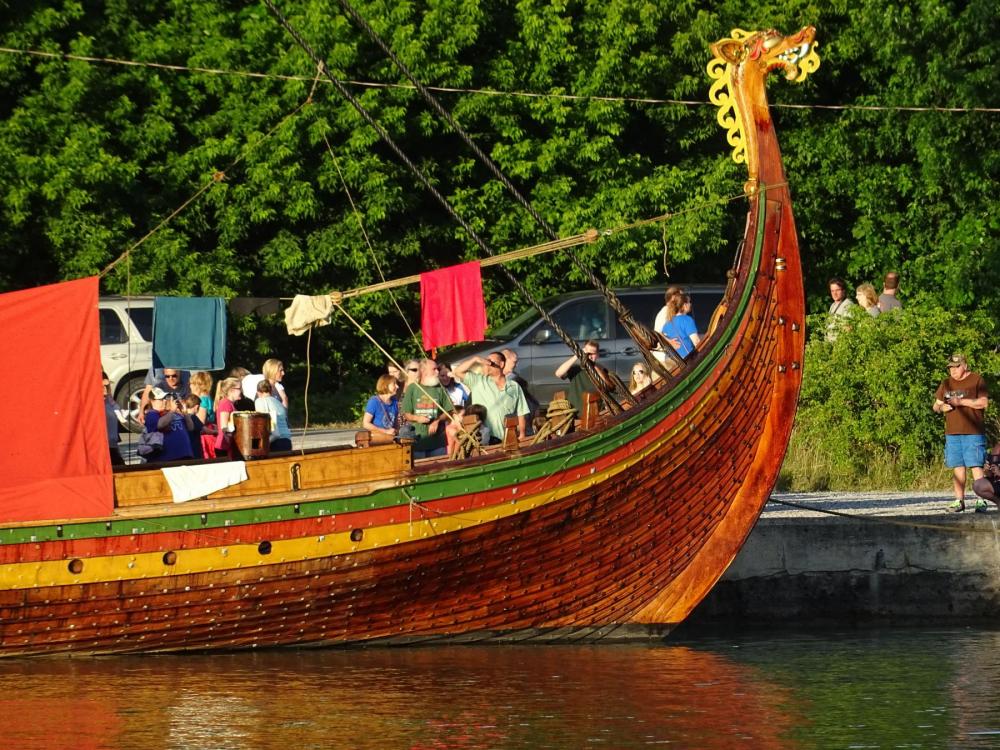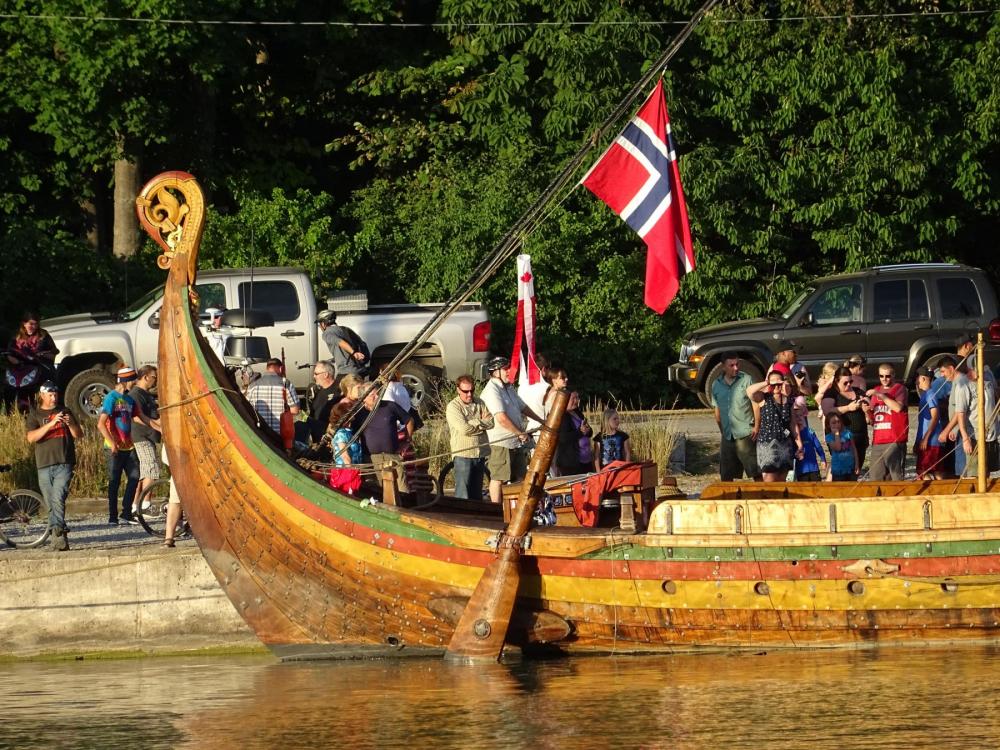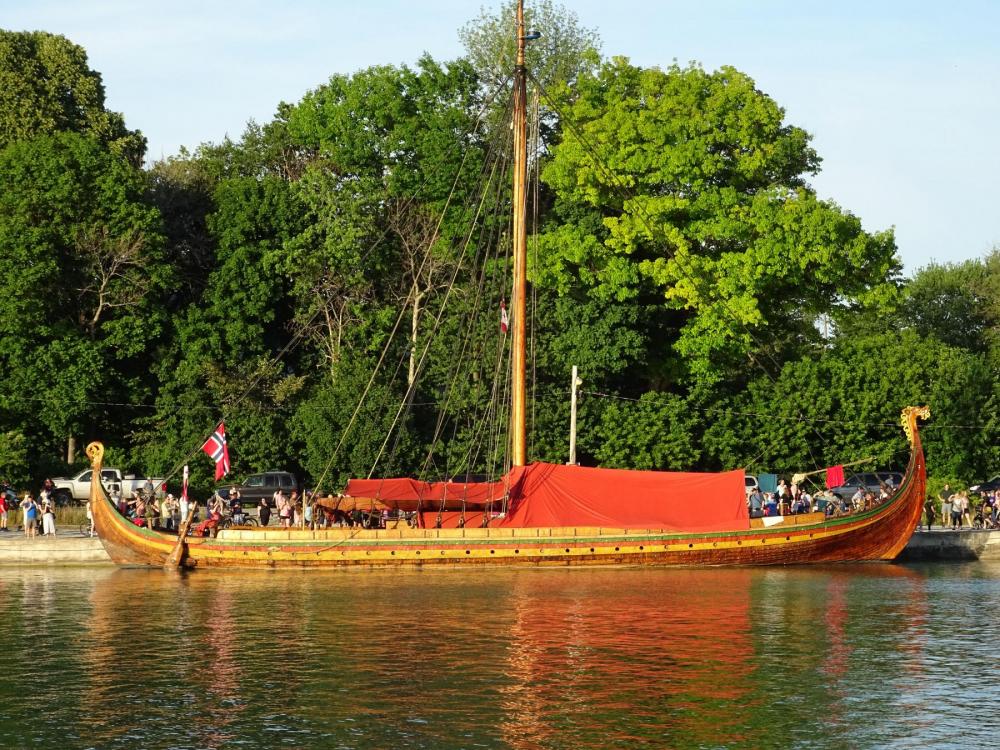-
Posts
13,377 -
Joined
-
Last visited
Content Type
Profiles
Forums
Gallery
Events
Everything posted by druxey
-

34ft Danish Cutter by adamdt
druxey replied to adamdt's topic in - Build logs for subjects built 1901 - Present Day
Welcome back, Adam! I've just come across your log. Those are pretty impressive freehand curves but, as someone else mentioned, a flexible curve may ease your job. -
Thanks for your thoughtful rebuttal of my argument, Mark. I agree that the shell carving over the quarter badge is less than sophisticated, but I was looking at the framework of the lights. Also, I absolutely agree that some of the deck furniture looked paint-chipped and knocked about: I mentioned the examples of windlass and capstan, but the quarter deck breastwork also falls into that category. My 'take' is that more than one hand worked on the model and one was far more skilled than the other(s). Still, unless another example of ship with chequerboard deck coverings turns up, I remain a little sceptical! Regardless, this is - to me - a fascinating thread.
-
The latest post by Doreltomin made me go back and look at the photographs again. On more careful inspection there are too many anomalies that are making me suspicious. I've no doubt that the hull is genuine and old. Look at the condition of the paintwork and surfaces. Now look at the various rails along the topsides. Nice, unchipped and with unmarked paint. Check the quality of the quarter badge. Now compare the quality of work with that of the stern ornamentation. No comparison. Also, doesn't that chequerboard look just a little too neat and clean? Now, convince me that all that weather deck work is the same vintage as the hull. (OK, some of the deck fittings such as the capstan and windlass look 'right', but....)
-
Looks good, Mark. What do you mean by 'the stern looks different on the drawing than it does looking into the hull'?
-
Thanks for the explanation, Chuck.
- 269 replies
-
- Queen Anne Barge
- Syren Ship Model Company
-
(and 1 more)
Tagged with:
-
If SilkSpan is unavailable, try Esaki Plyspan, also from SIG. Correctly handled, I've found it to be highly satisfactory for both sails and flags - see my scratch build log of the Greenwich Hospital barge. I've tried to use drafting linen but, unless you are working at very large scales, it is too bulky and doesn't drape nicely.
-
Silly question: could those height marks be laser engraved into the sides of the frames? Also, those for the risings?
- 269 replies
-
- Queen Anne Barge
- Syren Ship Model Company
-
(and 1 more)
Tagged with:
-
She was in the Welland Canal at the mouth of Lake Ontario a few weeks ago, travelling up to Lake Erie. Pics show her moored for the night at Port Weller East.
-
Have a great time and look forward to your return, Frank!
- 649 replies
-
- dunbrody
- famine ship
-
(and 2 more)
Tagged with:
-
A great story. However the so-called "Mayflower Barn" tale has been debunked since.
-
Very impressive work indeed, Siggi. Congratulations on a great result. I only wish I could see the rest of the ship as well!
- 58 replies
-
- barge
- ships boat
-
(and 1 more)
Tagged with:
-
Very clean indeed, Chuck!
- 269 replies
-
- Queen Anne Barge
- Syren Ship Model Company
-
(and 1 more)
Tagged with:
-

Frégate d'18 par Sané , la Cornélie
druxey replied to JohnE's topic in CAD and 3D Modelling/Drafting Plans with Software
Woof, indeed! Good going in the capricieux regions, John. -
The stub mast and bowsprit jumped out at me even before I read your post, Mark. I concur that they are modern additions. This odd duck is the first representation I have seen showing chequerboard druggets on the weather decks of a ship. The carved works are nowhere near the standard of the so-called 'Admiralty' models. Are those out-of-scale fire buckets represented on the quarter deck breastwork? Strange.
-
Siggi: after I completed my barge, I realised that the oars were for a single banked (one rower per bench) size. They have been changed from 19' 0" to 15' 0" ones. No longer are steroid-filled athletes are required! Congratulations on completing your own fine model.
- 58 replies
-
- barge
- ships boat
-
(and 1 more)
Tagged with:
-
Excellent news, Dick! I might suggest adding a section on the research that you've done? Most folk shy away from it and don't know how to go about it. That would be a valuable add-on.
-
This build is quite fascinating, with all the research and interpretation that you have put into it, Dick. You should consider writing it up for an article or series of articles for the Nautical Research Journal.
-
Tried the Miller web site, but while I could spend a lot of time with these e-catalogs, it jumps auction 12. Do you have a url, please, Mark? I've sen the chequerboard canvas represented on open boat models and always assumed these were roll-up temporary, not permanent, floorcloths. One would need to lift them to bail the boat, among other maintenance activities.
-
You've done a beautiful job on the platforms, Frank. Are you planning on showing paliasses (mattresses), etc as well?
- 649 replies
-
- dunbrody
- famine ship
-
(and 2 more)
Tagged with:
-
Going together very nicely, Chuck!
- 269 replies
-
- Queen Anne Barge
- Syren Ship Model Company
-
(and 1 more)
Tagged with:
About us
Modelshipworld - Advancing Ship Modeling through Research
SSL Secured
Your security is important for us so this Website is SSL-Secured
NRG Mailing Address
Nautical Research Guild
237 South Lincoln Street
Westmont IL, 60559-1917
Model Ship World ® and the MSW logo are Registered Trademarks, and belong to the Nautical Research Guild (United States Patent and Trademark Office: No. 6,929,264 & No. 6,929,274, registered Dec. 20, 2022)
Helpful Links
About the NRG
If you enjoy building ship models that are historically accurate as well as beautiful, then The Nautical Research Guild (NRG) is just right for you.
The Guild is a non-profit educational organization whose mission is to “Advance Ship Modeling Through Research”. We provide support to our members in their efforts to raise the quality of their model ships.
The Nautical Research Guild has published our world-renowned quarterly magazine, The Nautical Research Journal, since 1955. The pages of the Journal are full of articles by accomplished ship modelers who show you how they create those exquisite details on their models, and by maritime historians who show you the correct details to build. The Journal is available in both print and digital editions. Go to the NRG web site (www.thenrg.org) to download a complimentary digital copy of the Journal. The NRG also publishes plan sets, books and compilations of back issues of the Journal and the former Ships in Scale and Model Ship Builder magazines.





